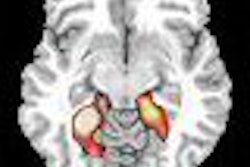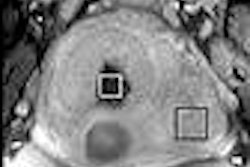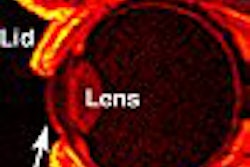MRI is useful in differentiating pathologic fractures from stress fractures in long bones when the clinical presentation of the fracture is misleading and radiography findings are also inconclusive. MRI is most sensitive to the presence of underlying bone marrow lesions and should be performed after radiography, according to researchers from the John Hopkins Medical Institutions in Baltimore.
While CT didn't perform as well as MRI in differentiating fracture types, it is useful for depicting and confirming fracture lines and for characterizing the nature of periosteal reaction or cortical pattern of destruction, the authors stated in a study on the CT and MRI features that distinguish pathologic fractures from stress fractures in long bones, published in the American Journal of Roentgenology (October 2005, Vol. 185:4, pp. 915-924).
"Although stress fractures are common, they remain one of the most challenging diagnoses in skeletal imaging. Stress fractures may share imaging features with pathologic fractures, and distinguishing these entities can pose a diagnostic dilemma," the researchers wrote.
The accuracy for differentiating between the two fracture types was highest with MRI in the retrospective study, which included 30 patients with pathologic fractures of the long bones and 29 patients with stress fractures. CT had lower accuracy than radiography and MRI.
The images -- 43 radiographs, 37 CT scans, and 45 MRI images -- were reviewed independently and randomly by two reviewers. Consensus opinion was subsequently obtained for cases in which there was discrepancy.
The diagnostic accuracy of MRI for detecting pathologic fractures was 98%, compared to 94% for radiography, for one reviewer. The other reviewer scored 93% for MRI and 88% for radiography.
For MRI, the overall sensitivity, based on the consensus opinion for a pathologic fracture, was 96%, specificity was 100%, positive predictive value was 96%, and negative predictive value was 96%.
In addition, the interobserver agreement (k) based on both the determination of a pathologic fracture and confidence scores was highest for MRI, as shown below.
|
Differentiating features on MRI
The significant differentiating features of pathologic fractures on MRI were a well-defined hypointense T1 bone marrow abnormality, a well-defined hyperintense T2 bone marrow signal abnormality, endosteal scalloping, presence of soft-tissue mass, and nonspecific presence of muscle signal abnormalities with pathologic fractures compared with stress fractures.
The most useful discriminating feature was a well-defined low-signal T1-weighted abnormality. This feature had a high sensitivity of 100% and specificity of 93%.
"On MRI, pathologic fractures compared with stress fractures exhibited well-defined T1 marrow signal (83% versus 7% respectively; p < 0.001), endosteal scalloping (58% versus 0%, p < 0.001), muscle signal (83% versus 48%, p = 0.026), and soft tissue mass (67% versus 0%, p < 0.001)," the researchers wrote.
The assessment of T1 signal changes is paramount, according to the research group, because in stress fractures T2 signal changes may indicate inflammation, while in pathologic fractures T2 signal changes may be due to a mix of tumor and inflammatory changes.
Periosteal signal changes and cortical signal changes were not helpful in differentiating features and were better characterized on CT. Muscle signal abnormalities, although more commonly associated with pathologic fractures, were not significantly different in character from stress fractures, according to the authors.
The fluid sign, a sensitive sign for benign vertebral fracture, according to published literature, was not a useful feature in distinguishing long bone fractures, the authors reported. The fluid sign was present in 33% of pathologic fractures and 24% of stress fractures.
MR was done on a 1.5-tesla system (Signa LX, GE Healthcare, Chalfont St. Giles, U.K.) using a phased-array coil, and scans consisted of a minimum of T1 and fat-suppressed T2-weighted images in two planes.
Differentiating features on CT
The significant differentiating features on CT of pathologic fractures compared with stress factures were hyperdense bone marrow, endosteal scalloping, and aggressive periosteal reaction.
|
In two of 12 cases of stress fracture, presence of an underlying lesion was incorrectly interpreted, and in four of 25 cases of pathologic fracture, the presence of an underlying tumor was missed.
"The difficulty that reviewers had may be explained by the overlapping CT features observed for stress fractures and pathologic fractures in this study," the authors wrote. "With the advent of 16-(slice) MDCT and associated isotropic datasets, it is possible that the increased fine detail of the bones afforded by this advanced technology may provide additional specificity for the diagnosis of these fractures."
In 10 cases in the patient group, the CT exam of the limbs was included as part of a dedicated CT exam of the chest or abdomen using a 5-mm slice thickness, pitch of 4, 5-mm reconstruction interval, 280 mA, and 120 kVp.
A dedicated contrast-enhanced exam of the affected limb was performed in seven cases, and in the remaining cases, an unenhanced helical study was performed. The CT scans were performed using a Somatom Plus 4 scanner or VolumeZoom unit (Siemens Medical Solutions, Malvern, PA). Sagittal and coronal reconstructed images were obtained for the dedicated scans.
The accuracy of CT for distinguishing stress fractures from pathologic fractures was 80% for nondedicated studies and 85% for dedicated studies.
The authors also observed that the fracture location could provide a clue to the type of fracture, given that 75% of pathologic fractures in the study were metaphyseal and 58% of stress fractures were diaphyseal. "Our results concur with those reported in the literature; fatigue fractures in one study were all located in the diaphysis," they concluded.
By N. Shivapriya
AuntMinnie.com contributing writer
October 21, 2005
Related Reading
MR, CT best to evaluate early tibial stress injury, July 20, 2005
MDCT, scintigraphy yield very different reads on wrist fractures, May 18, 2005
Soccer players' injury rates tracked in British study, April 22, 2005
Study finds MRI is overused in sports medicine, February 24, 2005
Increased RA pain may be due to stress fracture, December 27, 2004
Copyright © 2005 AuntMinnie.com



















